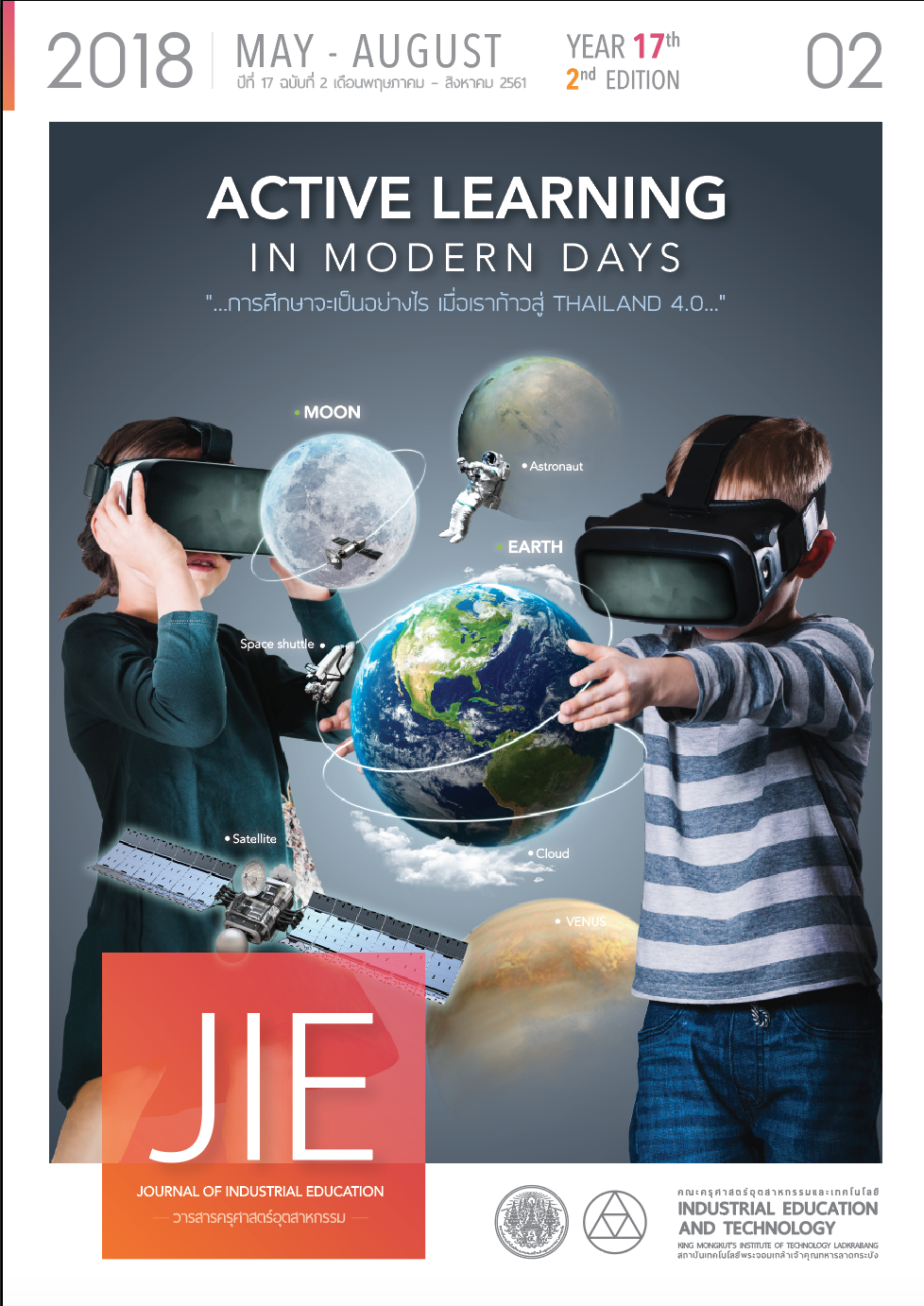INSTRUCTIONAL ACTIVITY PACKAGE ON LINEAR PROGRAMMING USING A GRAPHIC CALCULATOR FOR MATHAYOMSUKSA FIVE STUDENTS
Keywords:
instructional activity package, graphic calculatorAbstract
The purposes of this research were (1) to design an instructional activity package on linear programming using a graphic calculator for Mathayomsuksa Five students with 80/80 efficiency criteria, (2) to study students’ achievement in linear programming after they learned the topic via the created package and (3) to evaluate the students’ satisfaction toward the contents of linear programming and instructional activities with using a graphic calculator in the designed package.
The study was conducted during the second semester of the 2017 academic year with athyomsuksa Five students at Watpapradoo School in Rayong. Through a method of the cluster random sampling, forty participants were in the experimental group. The students were taught for thirteen periods with the created package by the researher. At the end of the instructional package, a designed test and uestionnaire were given to the participants to assess the students’ acheivement in linear programming and evalute the students’ satisfaction toward the contents and activities designed with using a graphic calculator in the package, respectively.
The findings of the study revealed that the instructional activity package on linear programming using a graphic calculator for Mathayomsuksa Five Students efficiency E1/E2 was 77.90/78.20, which met 80/80 set criterion. The number of students who scored since 60% on the test was more than 70% of the total number of students. A Z-test was analyzed at .05 level of significance. And the subjects’ satisfaction toward the contents and activities in the instructional packages was at the “high” level.
References
[2] Butkiaw, S. 2010. An Investigation of Matthayomsuksa 6 Student’s Linear Programming Conceptual Understanding Using The Geometer’s Sketchpad as a Learning Tool. Journal of Education Khon Kaen University (Graduate Studies Research), Retrieved September 9, 2010, from https://www.tci-thaijo.org/index.php/EDGKKUJ/article/view/49996
[3] National Council of Teacher of Mathematics. 2000. Principles and Standards for School Mathematics. Virginia: NCTM.
[4] Benson, T. 1989. Effect of Computer Instruction in Finite Mathematics on Student Achievement and Attitude. Illinois: Illinois State University. Retrieved July 12, 2016, from https://proquest.umi.com/pqdweb? id=744784751&sid=1&Fmt= 2&clientid=61839&RQT=309&VName=PQD
[5] The institute for the Promotion of Teaching Science and Technology. 2007. Guide to Learning Mathematics Activities by Using Graphic Calculator at High School. Bangkok: Charianrat.
[6] Demana, F. and Waits, K. 2000. Calculators in Mathematics Teaching and Learning Past, Present and Future. In Learning Mathematics for a New Century. Virginia: NCTM.
[7] Kasberg, S. and Leatham, K. 2005. Research on Graphing Calculators at the Secondary Level: Implications for Mathematics Teacher Education. Contemporary Issues in Technology and Teacher Education. 5(1), p. 25-37. Retrieved June 20, 2016, from https://www.citejournal.org/volume-5/issue-1-05/mathematics/research-on-graphing-calculators-at-the-secondary-level-implications-for-mathematics-teacher-education
[8] Brahmawong, C. 2013. Development Testing of Media and Instructional Package. Silpakorn Educational Research Journal, 5(1), p. 7-20.
[9] Moore, D. and Quinn, C. 1994. Secondary Instructional Method. (N.P.).
[10] Sutham, C., et al. 2016. The Development of The Learning of Computer Problem Solving of Cooperative Learning Model for Matthayomsyksa 4 of Samsenwittayalai School. Journal of Industrial Education, 15(2), p. 56-63.
[11] Garnkonsu, S. 2009. Using Graphic Calculator for Developing Mathematical Learning Ability on Quadratic Function for MathayomSuksa 4 Students at Sankamphaeng Schoo, Chiang Mai Province. Master of Education Program in Mathematics Education, Chiang Mai University.
[12] Ekthaicharern, K. 2002. A Study of the Undergraduate Mathematics Students’ Achievement and Attitude on Learning Linear Algebra by Using Graphing Calculators. Srinakharinwirot Science Journal, 18(2), p. 52-61.
Downloads
Published
How to Cite
Issue
Section
License
"The opinions and contents including the words in papers are responsibility by the authors."
"ข้อคิดเห็น เนื้อหา รวมทั้งการใช้ภาษาในบทความถือเป็นความรับผิดชอบของผู้เขียน"



